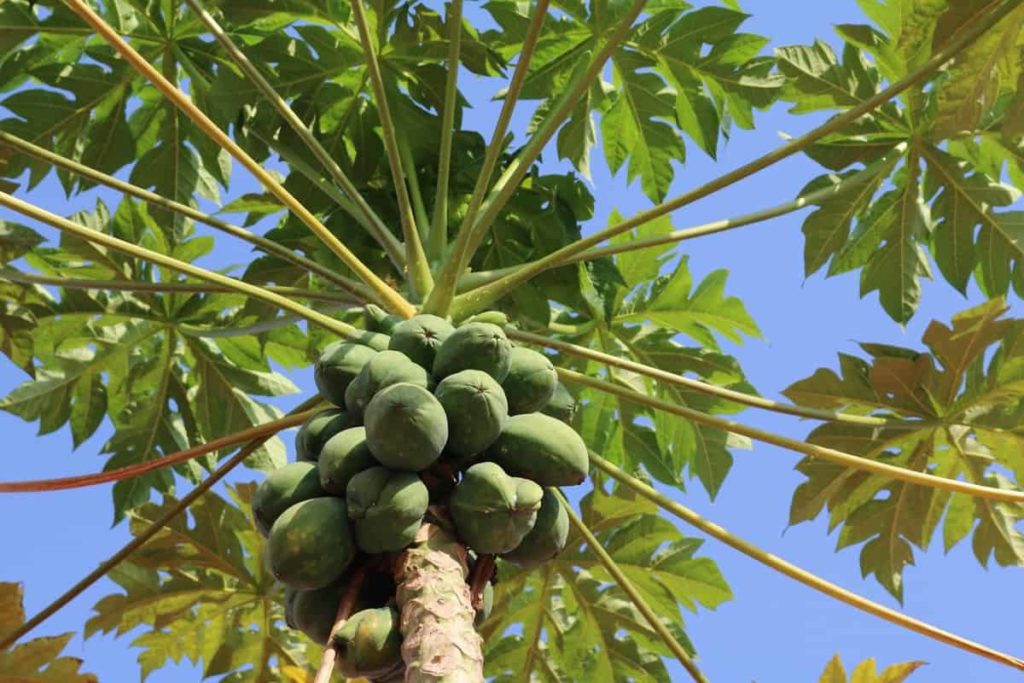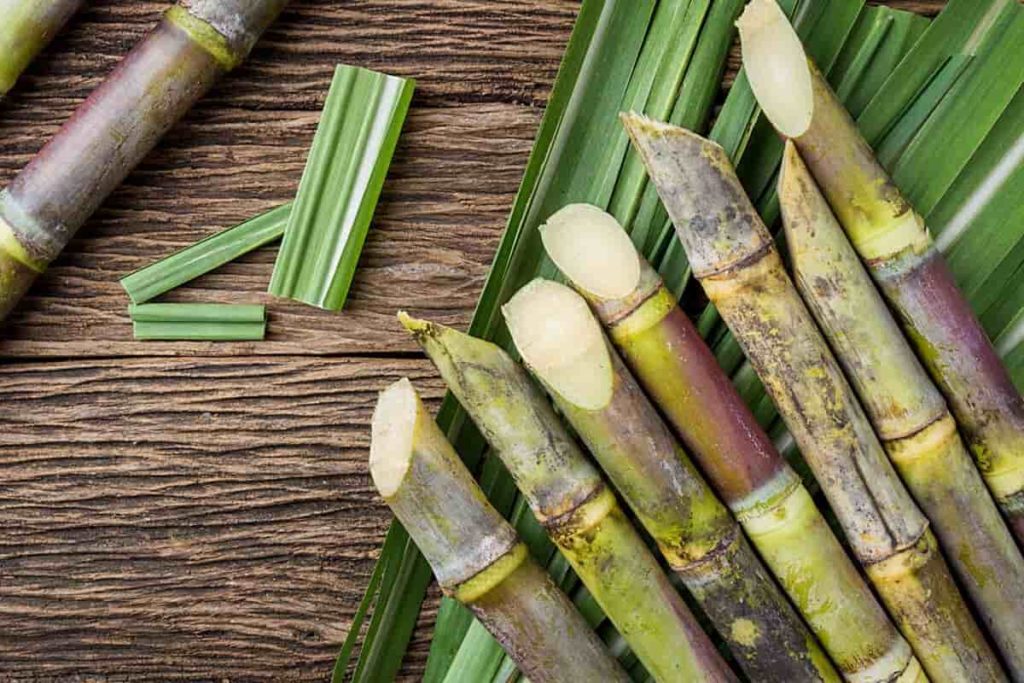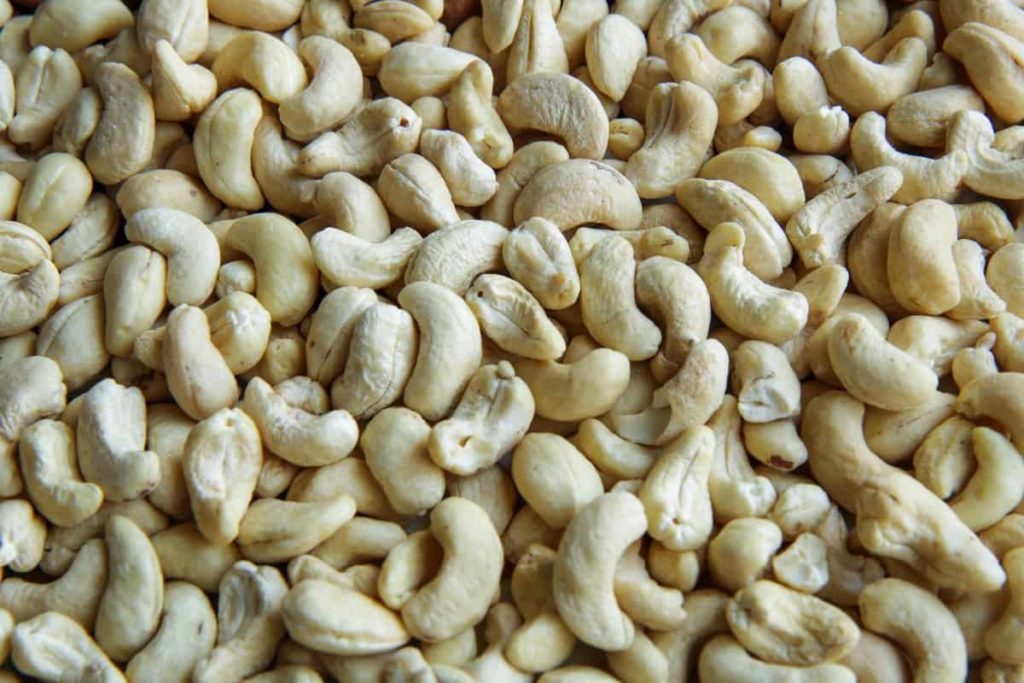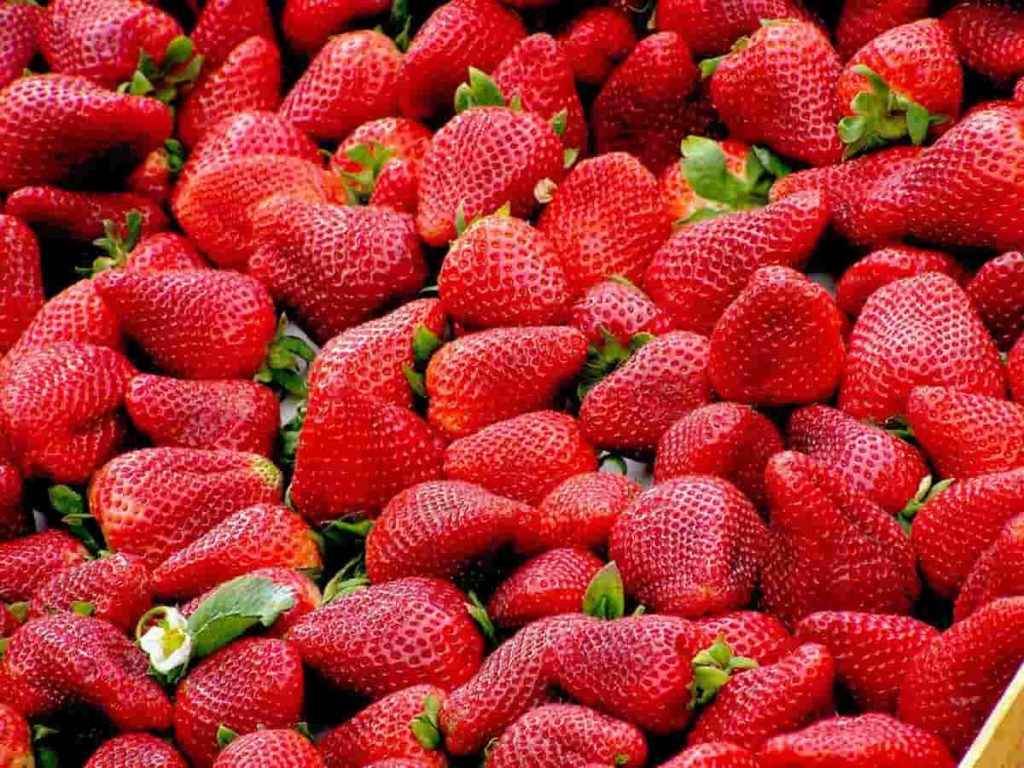The local crops in AP are Rice, Sugarcane, Cotton, Pepper, Mango, and Tobacco. Recently, crops used to produce vegetable oil, such as Sunflower and Peanut, have gained popularity. Andhra Pradesh is the largest producer of rice in the country and has historically been called the “Rice Bowl of India”. Andhra Pradesh is dominated by red clay. Andhra Pradesh is rich in a variety of soils, from poor coastal sand to extremely fertile deltaic alluviums. Let’s check out district wise crop production in Andhra Pradesh.

More than 66% of the cultivated area occupies red soil and is mostly located in Rayalaseema districts. The sustained growth of agricultural productivity and production requires the continuous development of new and improved crop varieties and efficient production systems (seed chains) and the supply of certified / quality seeds to farmers. The seed production chain in Andhra Pradesh is being strengthened by producing different types of seeds namely Breeder Seed, Foundation Seed, and certified seeds by various government and private institutions. =
The certified/standardized and improved seeds thus produced are being distributed to the farmers through various central and state schemes. This is the most effective method to increase production and productivity at the field level. Providing seeds on subsidy means that the average farmer can buy the most important input in agriculture, i.e., seeds at affordable prices, which will help in achieving the desired increase in productivity and production. The Andhra Pradesh state is mainly divided into 13 districts.
District wise crop production in Andhra Pradesh
Anantapur
The soil of the Anantapur district consists of 87.4% red soil, 12.5% black cotton soil, and 0.1% problematic land. The major crops in terms of area are 86% Groundnut, 3.3% Paddy and 10.7% other crops. The main crop is Groundnut which is grown in 7.0 lakh hectares in red soil under rainy conditions. Anantapur is now producing important crops like Sweet Orange, Sapota, Pomegranate, Mango, Banana, Papaya, Guava, Melon, and Vegetables. 90% of agriculture is rainfed in Anantapur. Rainfall may occur, but distribution is a major issue.
In case you miss this: High Density Papaya Plantation – Spacing, Yield In India

Crops often need to be protected from drying out through protective irrigation efforts. Multi-cropping or poly-cropping has many benefits and is intended to prevent drought. There is dryland agriculture which is dependent on rainfall, which has benefited Anantapur in another way. Other major crops are Sunflower (6.4%), Green Gram (4.9%), Pigeon (3.6%), Rice (3.4%), and Millet (2.2%). The production capacity of large crops is less than half a tonne per hectare which reflects the harsh production environment in the district.
- Field crops – Peanuts, Bengal gram, Sunflower, Rice, Red gram, Sorghum, Maize, Cotton, Ragi
- Fruits – Sweet Orange, Mango, Papaya, Banana
- Vegetables – Tomato, Chilli
Chittoor
In the Chittoor district, about 70% of the land is dry land and rainfed crops are grown in it. Only 30% is irrigated as compared to the average of Andhra Pradesh (35%). Before that, a variety of dry crops – Millet, Ragi, Millet, Millet, Nuts, Red Gram, Cabbage, Peas, Horse Gram, etc., were grown.
Chittoor district is one of the few major Mango growing districts in the state. Cashew is also grown mainly in Satyavedu, Puttur, and Srikalahasdti Mandals. Mango is grown on 53,401 acres which produce about 2.14 lakh tonnes per annum. Cashew is cultivated on 673 acres with an annual production of 161.5 tons. The major crops grown in this area are Cashew nuts, Mango Tomato, Papaya, and Tamarind.
Highly volatile vegetable markets and farmers usually prefer to grow them in small plots of one or two acres. Vegetables and Sugarcane crops are the mainstays of small and backward farmers. Because there are not enough cold storage plants, farmers often have to bear heavy losses of vegetables, especially Tomatoes, when prices fall due to market disturbances.
- Major Field crops – Peanut, Rice, Sugarcane, Red gram, Sunflower
- Fruits – Mango, Banana
- Vegetables – Tomato, Pepper, Eggplant, Potato, Beans
- Spices and planting crops – Coconut, Tamarind
In case you miss this: Dwarf Banana Farming -Plantation In India

East Godavari
The major crop grown in this district is Paddy. Other crops grown include Maize, Oilseeds, Sugarcane, and pulses such as Black Gram and Green Gram. East Godavari is a predominantly agricultural district and is famous for it, which contributes about 10% to the total food production of Andhra Pradesh. It is the second richest district in India and the most prosperous district in the state. Peppers, Sugarcane, Peanuts, Cotton, and Tobacco are the commercial crops of the district.
- Major field crops – Paddy, Sugarcane, Cotton, Greengram, Blackgram
- Fruits – Mango, Banana, Lemon
- Vegetables – Gourds, Chillies, Brinjal, Bhendi
- Plantation crops – Coconut, Oil palm, Cashew
Guntur
The main crops of Guntur are Paddy, Cotton, Chilli, Tobacco Pulses, Maize, Turmeric, etc. Related activities like dairy are also popular. The district’s crop intensity is 128%. The total crop area of the district is 8.18 lakh hectares, the net sown area is 6.39 lakh hectares and the net irrigated area is 4.34 lakh hectares.
The major crops are Paddy, Cotton, Chilli, Tobacco, Maize, Turmeric, etc. The main fruit crops are Banana, Citrus, Mango, Sapota, and Guava. Spicy crops such as Pepper and Turmeric; Vegetables such as Okra, Eggplant, Tomato, Gourd, Onion, Elephant’s Foot Yam; Flowers such as Marigold, Jasmine, and Crossandra. There is also plenty of room for medicinal and aromatic plants.
Krishna
Paddy crop is widely grown in the Krishna district. Krishna is one of the prominent coastal districts of Andhra Pradesh, where many crops are grown throughout the year. Agronomists also consider it a museum of crops. The most common occupation of the district is agriculture.
Major horticultural crops grown are in the district are:
- Coconut
- Lime
- Mango
- Guava
- Cashew nuts
- Palm Oil
Major vegetables grown in this district are:
- Tomato
- Cucumber
- Okra
- Eggplant
- Cabbage
- Cauliflower
- Leafy vegetables
Paddy which is grown in large quantities in the district is exported to other districts/states. Other crops grown include Maize, Millet, Cotton, Sugarcane, Peanuts, Pulses, Chillies, and to some extent Tobacco. With adequate rainfall and abundant availability of Krishna water, the cultivation of crops is in full swing in the Krishna district. This Kharif season started in June / July this year. Paddy, Cotton, Maize, Sugarcane, Chilli, and Black Gram are the major crops grown in the district during the Kharif season.
In case you miss this: Organic Sugarcane Farming, Production Practices

Kurnool
Agriculture in the Kurnool district is mainly a “fallow-chickpea” cropping system. The major crops grown in the district are Chickpea, Groundnut, Sunflower, Rice, Millet, Cotton, Pigeon, Black Gram, and Onion. The climate of the district is generally good and healthy. Kurnool district also occupies an important place in the horticultural crop production map of the state.
It is one of the major producing areas for Bananas in fruits, Tomatoes, and Okra in vegetable crops, Onions and Coriander in spices, Crossandra, Jasmine, Marigold in flower crops. Recognizing the growing importance of horticultural crops, an attempt has been made to study the geographical patterns of fruit crop cultivation in the Kurnool district. Crops are sown in June-October during Kharif (rainy season) and Rabi (after rains) from November to February.
During the rainy season, the main crops are Paddy, Cotton, and Pigeons. In the post-rainy season, Chickpea, Sorghum, and Sunflower are mostly cultivated. The 1,17,537-hectare area in the Kurnool district has vast potential for horticulture with a wide range of fruits, vegetables, spices, and flowers. The main crops grown are Mango, Banana, Sweet Orange, Pomegranate, and Guava. The main vegetables grown include Tomatoes, Eggplant, Okra, and Beans as well as Onions and Chillies.
Prakasam
Prakasam district has all types of soils including sandy loam soil 5.9%, red soil 51.3%, black soil 40.8%, and sandy soil 2%. The Prakasam district has reasonably good resources for agriculture and allied sectors.
- Major field crops – Chick Pea, Paddy, Red gram, Tobacco, Cotton, Sunflower, Bajra, Peanuts
- Fruits – Orange, Mango, Sapota, Lemon, Papaya
- Vegetables – Peppers, Tomato
- Plantation crops – Coriander
Srikakulam
Due to its availability, agriculture is the main occupation of the people here. Paddy, Peanuts, Mesta, Sugarcane, Green gram, Black gram, and Horse gram are the major crops grown. Mango, Onion, and Chilli are important horticultural crops. Paddy is the main crop and 75% of the crop’s debt goes to this crop. Groundnut, Mesta, Cashew, Chilli, Oilseeds, Pulses, and Sugarcane are also major cash crops grown in the district. Coconut, Mango, and Guava are important horticultural crops.
In case you miss this: Organic Cashew Production (Kaju) – Cultivation In India

Crop loans are more than 50% in the district and other orchards like Cashew, Mango and Coconut should be encouraged for diversity. Lack of infrastructure for protection and processing activities of horticultural crops such as Oil Palm, Cashew, Pineapple, Mango, Banana, Tomato, Turmeric, and Ginger which are grown in large quantities. FPOs / clusters can be developed for the horticulture sector.
A large number of production companies can be developed to carry out activities in societies such as Coconut Processing, Cashew, Pineapple, Mango, Bamboo Products, Aloe Vera Gel, Mushroom Cultivation, Floriculture, and Jute bag making will result in raising the income level of farmers and tribal people.
Sri Potti Sriramulu Nellore
The major crops of Sri Potti Sriramulu Nellore are Paddy (166638 ha), Black Gram (9209 ha), Bengal Gram (11040 ha), Groundnut (9488 ha), and Green Gram (2452 ha). The Department of Agriculture has been set up as an arm of the government to work in the process of harmonizing the farming community. Major Kharif crops such as Paddy, Peanuts, Bengal Gram are grown in Nellore. Known for its nutritious ingredients, it is the staple food of millions of people. Apart from these crops, pulses like Red Gram, Black Gram, Green Gram, etc., are also under cultivation.
Visakhapatnam
Vizag will soon become the center of many rare crops in the region due to its excellent fertility. The area is suitable for Apple, Strawberry, Grape, Pepper, Basmati Rice, Organic Coffee, and many other crops. Rice is one of the main crops grown in this area followed by Ragi, Bajra (pearl millet), Jowar (Sorghum), and cash crops like Groundnut (Peanuts), Sugarcane, Sesame, Cotton, and Chillies. Agriculture is the main source of income for about 70% of households.
Although Visakhapatnam city is developing industrially, rural areas are lagging. Since there is no major irrigation system, only 36% of the crop area is irrigated under the medium irrigation system and minor irrigation tanks. The rest of the cultivated area is under dry crops in terms of monsoon chaos. Crop productivity is low. Strawberries, Grapes, and Basmati have been tested in the Vizag zone. The area is also suitable for fruits such as Peaches, Japanese Plum, Avocados, Lychees, and Cocoa.
In case you miss this: Growing Strawberries In Greenhouse – In India

Vizianagaram
Agriculture is an important economic activity and the major crops grown in the district during the Rabi season are Rice, Groundnut, Mesta, Sugarcane, Cotton, Maize, Ragi, Bajra, and Pulses. The average yield in the district is low due to erratic rainfall. This district is primarily an agricultural district as 68.4% of the laborers are engaged in agriculture.
Horticulture is one of the key areas of the overall development of the district and sustainable horticulture development aims to increase area and productivity by encouraging post-harvest management. There is ample scope for cultivating Mangoes, Cashews, Oil Palms, and Vegetables. Necessary arrangements for safe production (polyhouses / shade nets) under safe cultivation are also being promoted at specific places in the district.
West Godavari
Paddy is the major crop in this district in both seasons. Sugarcane is the second largest crop during the Kharif season. Both Paddy and Sugarcane together account for about 95% of the total cultivated area. Rabi season crops like Maize, Tobacco, Peanuts, Pulses and Sunflower are the other major sowing areas. Mango, Coconut, Oil, Palm, Cashew, Sour, Banana, Turmeric, Sapota, Papaya, Cucumber, Pumpkin, Okra, Eggplant, Tomato, Cabbage, Cauliflower, and Leafy vegetables are other important horticultural crops grown in the district.
YSR District, Kadapa
Kadapa district is mainly rich in red and black soils with poor to fertile lands. The soil of the district is classified as red compost soil and black soil. These two classes can be subdivided into clay, loamy sand with fine distinction.
Paddy, Groundnut, Red Gram, Cotton, Bengal Gram are important crops. Mango, Citrus, Banana, Melon, Papaya are major fruit crops. Turmeric, Onion, Sunflower, Chilli, Coriander, Sugarcane, Vegetables, and Chrysanthemum are other commercial crops grown in the district. Orange, Lime, and Betel Leaf are special crops. They are grown near the river beds.
- Types of Pesticides Used in Agriculture: A Beginner’s Guide
- Economical Aquaculture: A Guide to Low-Budget Fish Farming
- 15 Common Planting Errors That Can Doom Your Fruit Trees
- How to Make Houseplants Bushy: Effective Tips and Ideas
- Innovative Strategies for Boosting Coconut Pollination and Yield
- Pollination Strategies for Maximum Pumpkin Yield
- The Complete Guide to Chicken Fattening: Strategies for Maximum Growth
- Natural Solutions for Tulip Problems: 100% Effective Remedies for Leaf and Bulb-Related Issues
- Revolutionizing Citrus Preservation: Towards a Healthier, Greener Future
- Natural Solutions for Peony Leaf and Flower Problems: 100% Effective Remedies
- Maximizing Profits with Avocado Contract Farming in India: A Comprehensive Guide
- Natural Solutions for Hydrangea Problems: 100% Effective Remedies for Leaf and Flowers
- The Ultimate Guide to Choosing the Perfect Foliage Friend: Bringing Life Indoors
- From Sunlight to Sustainability: 15 Ways to Use Solar Technology in Agriculture
- The Ultimate Guide to Dong Tao Chicken: Exploring from History to Raising
- The Eco-Friendly Makeover: How to Convert Your Unused Swimming Pool into a Fish Pond
- Mastering the Art of Delaware Chicken Farming: Essentials for Healthy Backyard Flocks
- 20 Best Homemade Fertilizers for Money Plant: DIY Recipes and Application Methods
- How to Craft a Comprehensive Free-Range Chicken Farming Business Plan
- Brighten Your Flock: Raising Easter Egger Chickens for Beauty and Bounty
- How to Optimize Your Poultry Egg Farm Business Plan with These Strategies
- Subsidy for Spirulina Cultivation: How Indian Government Schemes Encouraging Spirulina Farmers
- Ultimate Guide to Raising Dominique Chickens: Breeding, Feeding, Egg-Production, and Care
- Mastering the Art of Raising Jersey Giant Chickens: Care, Feeding, and More
- Ultimate Guide to Raising Legbar Chickens: Breeding, Farming Practices, Diet, Egg-Production
- How to Raise Welsummer Chickens: A Comprehensive Guide for Beginners
- How to Protect Indoor Plants in Winter: A Comprehensive Guide
- Ultimate Guide to Grow Bag Gardening: Tips, Tricks, and Planting Ideas for Urban Gardeners
- Guide to Lotus Cultivation: How to Propagate, Plant, Grow, Care, Cost, and Profit
- Agriculture Drone Subsidy Scheme: Government Kisan Subsidy, License, and How to Apply Online
- Ultimate Guide to Raising Araucana Chickens: Breed Profile, Farming Economics, Diet, and Care
- Bringing Hydroponics to Classroom: Importance, Benefits of Learning for School Students
- Ultimate Guide to Raising Polish Chickens: Breed Profile, Farming Economics, Diet, and Care
- Ultimate Guide to Raising Australorp Chickens: Profile, Farming Economics, Egg Production, Diet, and Care
- Silkie Chicken Farming: Raising Practices, Varieties, Egg Production, Diet, and Care
- Sussex Chicken Farming: Raising Practices, Varieties, Egg Production, Diet and Care